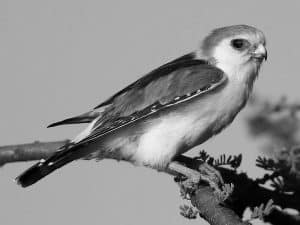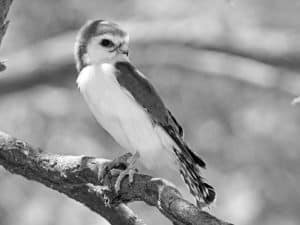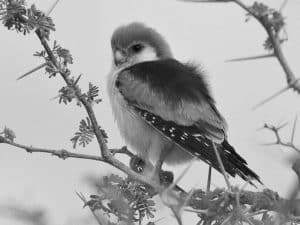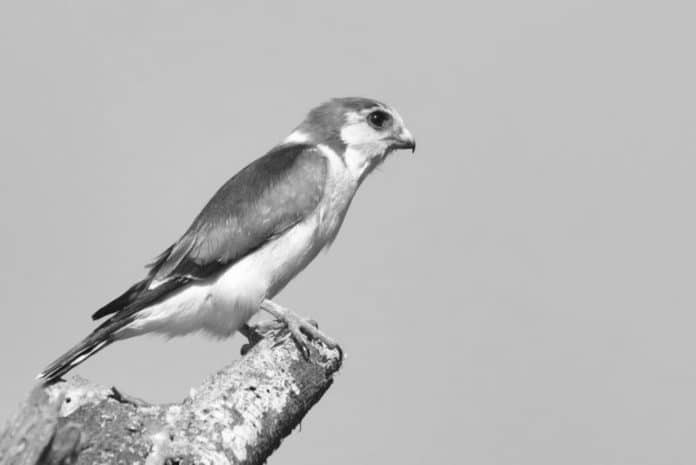Introduction to the Pygmy Falcon
Nestled within the vast landscapes and diverse ecosystems of Tanzania, the Pygmy Falcon stands as a small marvel in the country’s open skies. With its diminutive size and striking appearance, this bird species has captured the attention of birdwatchers and nature enthusiasts alike. In this article, we will delve into the world of the Pygmy Falcon in Tanzania, exploring its habitat, physical characteristics, behavior, and adaptations. Join us on this journey as we uncover the wonders of this fascinating creature.
Habitat and Distribution of the Pygmy Falcon in Tanzania

The Pygmy Falcon is native to the beautiful country of Tanzania, which boasts a wide range of habitats for these magnificent birds. They can be found in various regions, including the Serengeti National Park, Ngorongoro Conservation Area, and Tarangire National Park. These areas provide the perfect combination of open grasslands, savannahs, and woodlands, which are ideal for the Pygmy Falcons to thrive.
Despite their small size, Pygmy Falcons are highly adaptable and can be found in both arid and semi-arid environments. They are often seen perched on acacia trees, scanning the surroundings for their next prey. The Pygmy Falcon’s distribution in Tanzania is relatively widespread, but they tend to favor regions with an abundance of grasshoppers, lizards, and small birds.
Physical Characteristics of the Pygmy Falcon
Measuring just 20 centimeters in length, the Pygmy Falcon is one of the smallest birds of prey in Africa. Its compact size and slender body allow it to maneuver swiftly through the air, making it an agile hunter. The male and female Pygmy Falcons share similar physical features, with both sexes displaying a distinctive plumage.
The feathers of the Pygmy Falcon are predominantly gray, with a beautiful blend of black and white patterns on their wings and back. Their chest is adorned with a vibrant orange color, adding a touch of vibrancy to their appearance. Their sharp beaks and talons are perfectly adapted for catching and gripping their prey. These physical characteristics, coupled with their exceptional eyesight, make the Pygmy Falcon a formidable predator in the Tanzanian skies.
Behavior and Adaptations of the Pygmy Falcon
Despite its small stature, the Pygmy Falcon possesses a bold and fearless nature. It is known for its aggressive behavior when it comes to defending its territory or nest. These birds form monogamous pairs and fiercely protect their chosen area from any intruders, including larger raptors. Their adaptability is showcased in their ability to withstand extreme temperatures, making them well-suited to the harsh Tanzanian climate.
Pygmy Falcons are primarily diurnal hunters, meaning they are active during the day. They rely on their keen eyesight to spot their prey from great distances. Once they have located their target, they swiftly swoop down from their perches, using their sharp talons to secure their meal. These birds have also developed a remarkable ability to camouflage themselves within the branches of trees, which helps them blend seamlessly into their surroundings.
Conservation Status and Threats to the Pygmy Falcon in Tanzania
The Pygmy Falcon is currently listed as a species of least concern on the International Union for Conservation of Nature (IUCN) Red List. However, like many other bird species, they face potential threats to their survival. Habitat loss due to human activities, such as agriculture and deforestation, poses a significant risk to their population. Furthermore, climate change and the introduction of invasive species may also impact their natural habitat and prey availability.
To ensure the long-term survival of the Pygmy Falcon in Tanzania, conservation efforts are crucial. This includes the protection and preservation of their habitats, as well as raising awareness about the importance of these small marvels in the ecosystem. By working together, we can help secure a future where the Pygmy Falcon continues to grace the Tanzanian open skies.
Best Places to Spot Pygmy Falcons in Tanzania

If you’re an avid birdwatcher or simply have a fascination for these incredible creatures, Tanzania offers an array of exceptional locations to spot Pygmy Falcons. The Serengeti National Park, with its vast grasslands and abundant wildlife, provides an excellent opportunity to observe these birds in their natural habitat. The Ngorongoro Conservation Area, known for its diverse landscapes and stunning crater, is another hotspot for Pygmy Falcon sightings.
For those seeking a more off-the-beaten-path experience, the Tarangire National Park offers a unique opportunity to encounter Pygmy Falcons amidst the iconic baobab trees. These locations, along with many others throughout Tanzania, provide a glimpse into the world of these small marvels. Remember to bring your binoculars, camera, and a sense of wonder as you embark on this avian adventure.
Tips for Birdwatching and Photographing Pygmy Falcons in Tanzania
Birdwatching and photographing Pygmy Falcons in Tanzania can be a rewarding and memorable experience. Here are a few tips to enhance your encounters with these magnificent birds:
- Be patient: Pygmy Falcons are known for their elusive nature, so patience is key. Spend time observing their behavior and movements to increase your chances of spotting them.
- Carry the right equipment: A pair of binoculars and a telephoto lens will greatly enhance your birdwatching and photography experience. The ability to zoom in on these small birds will allow you to capture their intricate details.
- Respect their space: When observing Pygmy Falcons, it’s important to maintain a respectful distance. Avoid disturbing their natural behaviors and nesting areas to ensure their well-being.
Other Bird Species Found in Tanzania’s Open Skies
Tanzania is a birdwatcher’s paradise, boasting a rich diversity of avian species. In addition to the Pygmy Falcon, you can expect to encounter a plethora of other bird species during your visit. From the majestic African Fish Eagle to the colorful Lilac-breasted Roller, Tanzania offers an incredible variety of birdlife.
The country’s diverse habitats, including wetlands, forests, and coastal areas, provide a haven for both resident and migratory birds. Keep your eyes and ears open as you explore Tanzania’s open skies, and you might just be rewarded with sightings of the iconic Secretarybird, the graceful Grey Crowned Crane, or the elusive Shoebill.
The Role of Pygmy Falcons in the Ecosystem
Pygmy Falcons play an important role in the ecosystem of Tanzania. As predators, they help control populations of insects and small birds, contributing to the balance of the ecosystem. Their presence ensures that certain species do not become overly abundant, which could have detrimental effects on the overall biodiversity.
Furthermore, the Pygmy Falcon’s adaptability and resilience make them a valuable indicator species for monitoring the health of their habitats. By studying their behavior and population trends, scientists can gain insights into the overall well-being of the Tanzanian ecosystem. Protecting these small marvels is not just essential for their survival but also for the preservation of the delicate ecological balance they inhabit.
Conclusion: Appreciating the Small Marvels of Tanzania’s Open Skies

In the vast expanse of Tanzania’s open skies, the Pygmy Falcon stands as a testament to the remarkable diversity and beauty of the country’s avian population. Through its adaptability, resilience, and striking appearance, this small marvel captivates the hearts and minds of all who have the privilege of encountering it.
As we continue to explore and appreciate the wonders of Tanzania’s natural landscapes, let us remember the importance of protecting and preserving these small marvels. By taking steps to ensure their habitats remain intact and raising awareness about their vital role in the ecosystem, we can guarantee a future where the Pygmy Falcon soars through the Tanzanian open skies, forever enchanting those who witness its flight.

































